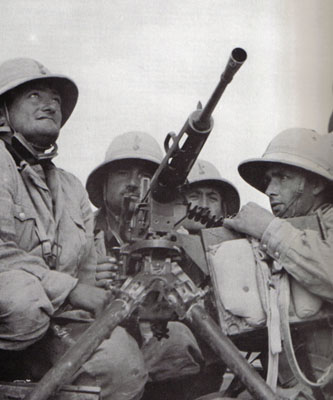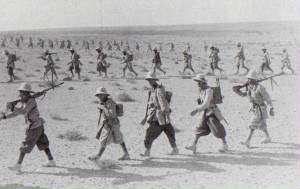|

As with much of Italy’s equipment, rations and their development,
issue and availability went through stages. Prior to the outbreak of the Second World War, Italy was a nation deeply occupied
with military armaments, research and development.
This stemmed in no small measure from Italy’s de-facto ruler
Benito Mussolini, who was convinced that to retain a strong nation, and reclaim the greatness of the Roman Empire, military
buildup was a vital necessity. Even though King Victor Emmanuel co-ruled with Mussolini, military buildup was solely Mussolini’s
bailiwick.
As part of this arms build-up, a modernization of forces was conducted,
which led to development of new weapons systems, aircraft, specialty naval vessels and expansion of Special Forces, such as
the traditional Alpini and new units such as Paracadutisti (Airborne Forces)
and Reggimento Carri Armati (Tank Regiments).
Even though not all developments
would keep up with the rush of new weaponry soon to hit the rest of Europe, Italian kit and weaponry designed during the 1930’s
was top-notch for its main purpose: Expansion of empire in areas where modern equipment was opposed by ill-organized and equipped
traditional ground forces. A prime example of this was the Italian attack on Abyssinia (Ethiopia) on October 2nd,
1935.
Africanina--The song of the Abyssinian
war-Get the Lyrics HERE.

While weapons and transport developments were the highest priority,
the Italian Army (Regio Esercito) had learned during the First World War that supplies and foodstuffs were what kept an Army
in the field and fit to fight. Along with developments and research in the area of arms, Italian science was pressed into
designing suitable food stuffs that not only were durable and easily transported, stored and air dropped in all climates,
but were also designed to provide highest nutrition while building troops morale. By this process, it was decided that rations
should be broken down into daily issued standard rations, field rations and specialty/emergency rations.
Click on the Rations Type below for more information:
|

